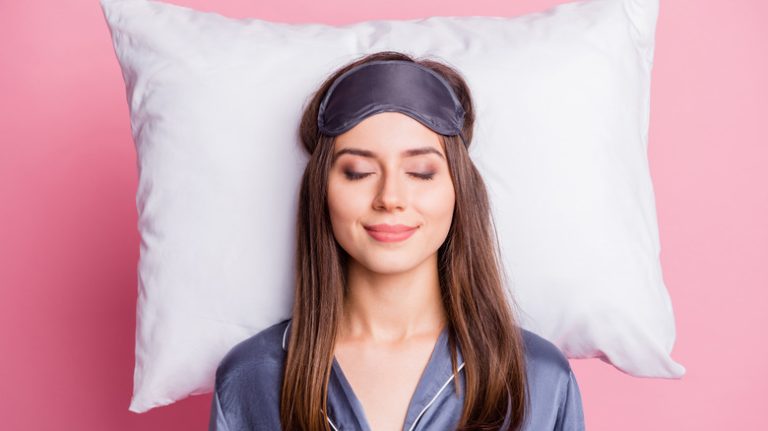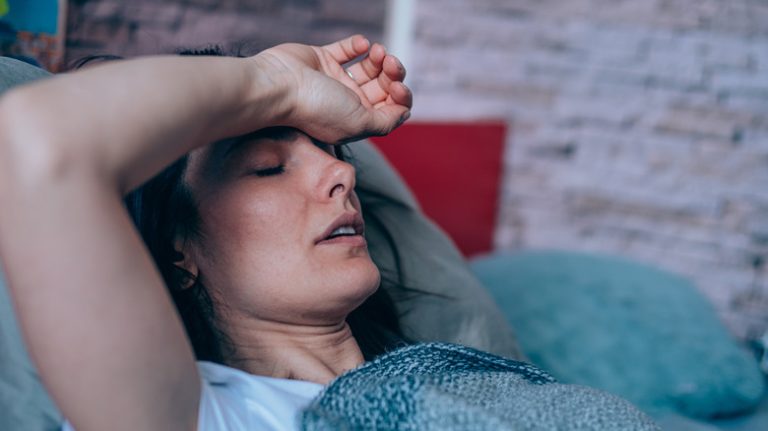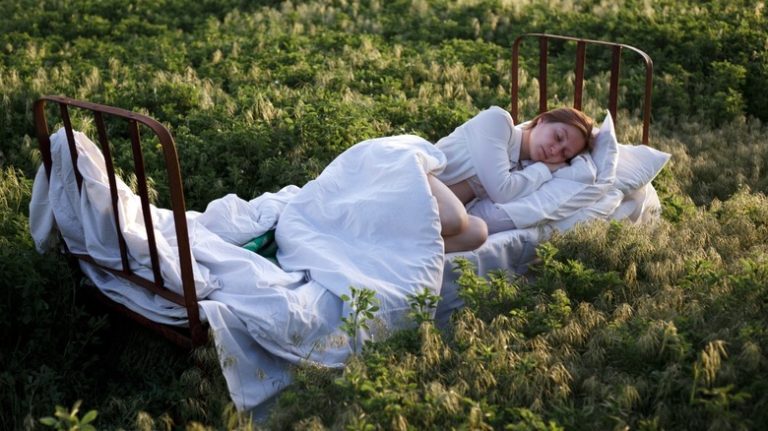When you’re asleep, you may experience some common behaviors like snoring or having nightmares. But what if your snoring is replaced by moaning or groaning, or your nightmares are more like night terrors? These are examples of parasomnias, or abnormal behaviors that occur during sleep. According to Sound Sleep Health, 10 percent of Americans experience such behaviors.
An article published in the 2006 issue of Psychiatry described parasomnias as “clinical phenomena that arise as [the] brain transitions between REM sleep, non-REM sleep, and wakefulness.” They tend to occur more frequently in children than adults. All patients with adult-onset parasomnias should be referred to a sleep specialist for evaluation, the article advised.
Parasomnias can occur any time of night, and episodes can last a few seconds or be as long as 30 minutes,” Dr. Gandis G. Maeika explained in article for Sound Sleep Health. “If you try to wake up someone [during an episode], the person may respond in an angry, aggressive, or even violent way,” Maeika continued. “Rather than trying to wake them, speak to them in a soft voice and gently guide them back to bed.” Now that you know how to respond to parasomnias, let’s take a look at the many strange things you might do in your sleep.
You might find yourself unable to move when falling asleep
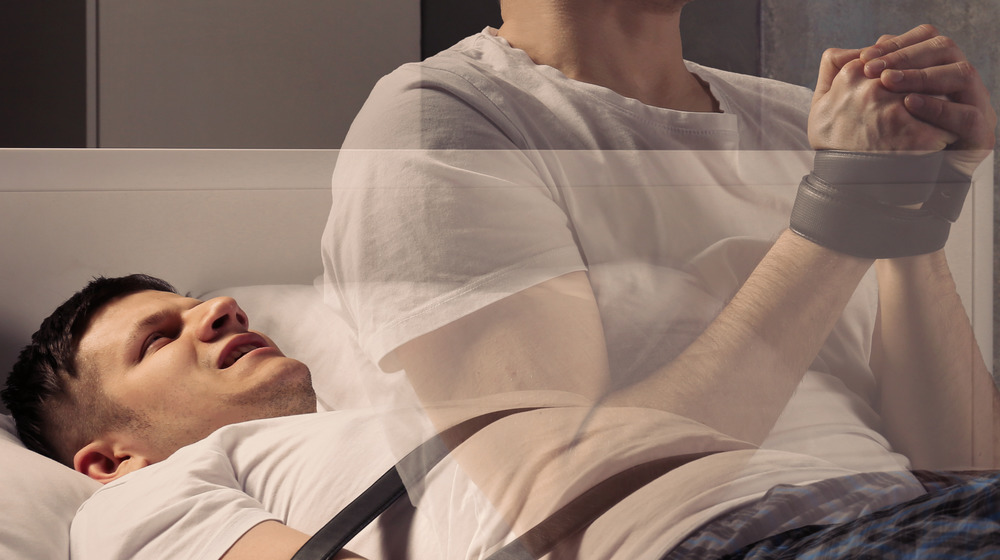
Just after falling asleep or waking up, some people experience a temporary inability to move. SleepFoundation.org describes this sleep paralysis as a temporary loss of muscle control called atonia. As if that weren’t enough, an estimated 75 percent of sleep paralysis episodes involve hallucinations, a 2024 Nature and Science and Sleep report revealed.
These hallucinations fall into three categories: perceiving a dangerous presence in the room, a feeling of suffocation, or a feeling of movement like flying. Because this combination can be scary, around 90 percent of episodes are associated with fear, according to SleepFoundation.org. While it likely feels longer, the average episode length is between six and seven minutes.
While the exact cause is unknown, people with obstructive sleep apnea have higher rates of this parasomnia, as chronicled in a 2010 study published in Quality of Life Research. Other people who might be at a higher risk of sleep paralysis are people who have trouble falling asleep or are very tired during the day. Shift workers and people with anxiety disorders or post-traumatic stress disorder may also experience this fleeting yet terrifying feeling (via SleepFoundation.org).
You might start walking (or driving) in your sleep
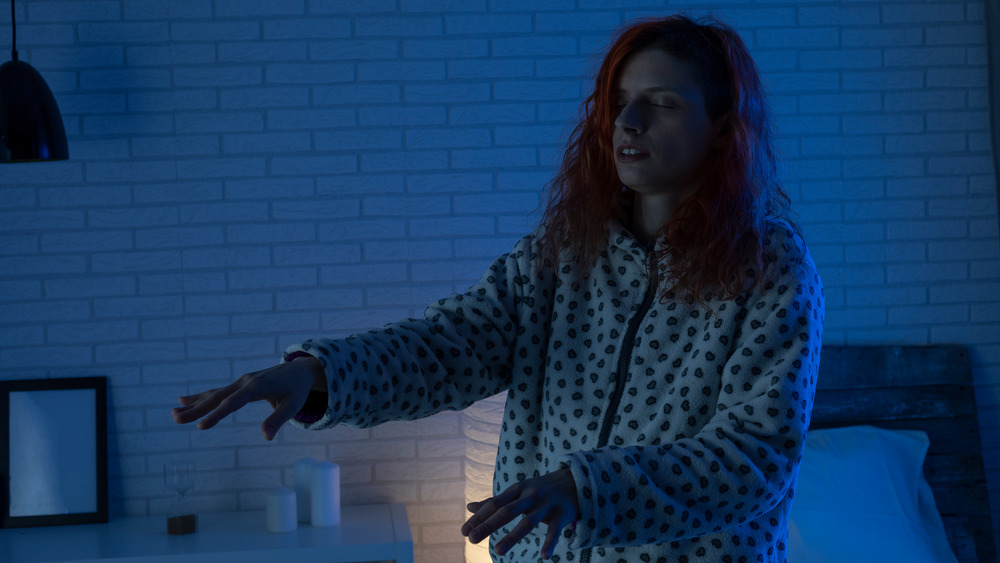
The definition of sleepwalking may be obvious, but it actually involves more than just walking while in a deep sleep. Columbia University Department of Neurology explained that it also encompasses other activities while asleep, like “sitting up in bed, opening the refrigerator, preparing food, or even driving.” Walking around, however, is most common. This strange parasomnia usually occurs early in the night, usually just an hour to two hours after falling asleep, the Mayo Clinic explained. An episode typically lasts a few minutes but can be longer. Interestingly, a person who sleepwalks may not remember the episode come morning.
According to the American Academy of Sleep Medicine, sleepwalking affects up to 4 percent of adults. A 2013 study published in Sleep found that most adult sleepwalkers who consulted the sleep clinic had a “history of aggressive and/or injurious behaviors during sleep, causing problems with bed partners.” Triggering factors include sleep deprivation and stressful events.
The Mayo Clinic explained that treatment for occasional sleepwalking isn’t always necessary. When it’s present in children, it usually ends by the time they’re teens. If it’s disruptive or potentially dangerous, treatment will focus on promoting safety and eliminating causes or triggers.
You might talk (and curse) in your sleep
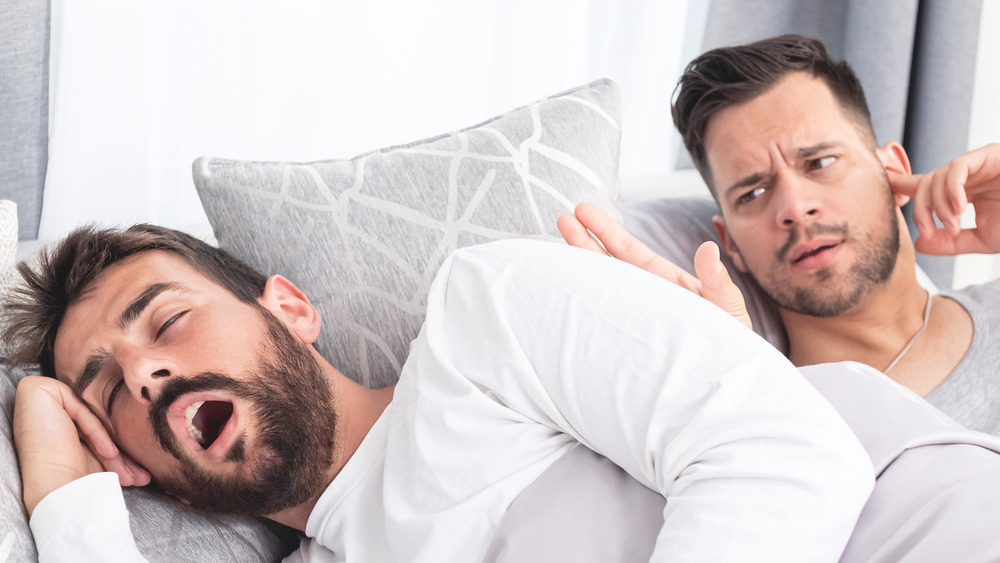
Shutterstock
Sleep talking, or somnliloquy, is defined by Sleep.org as talking during sleep without being aware of it. It can happen any time during sleep, but sleep talking is most likely to make sense to a bedmate during REM sleep. “Talking” is a broad term, however, since it doesn’t always involve speaking. It can mean mumbling, whispering, or calling out. Don’t hold anything that’s said against the sleep talker, because it’s “not considered a product of consciousness,” Sleep.org advised. “The words don’t have real meaning to the sleep talker; the person doesn’t know what he or she is saying.”
This parasomnia tends to be genetic and more common in men and children, according to the site, and most children do outgrow it. If it suddenly starts happening after the age of 25, though, it could be related to other medical issues. Psychology Today recommends following proper sleep hygiene and minimizing stress and anxiety to reduce episodes of somnliloquy.
Interestingly, a 2024 linguistic study published in Sleep found that men who sleep talk curse more than women who sleep talk. The sleep talkers in the study also used grammatically correct sentences and, most of the time, words were addressed to an invisible third person (“you”). They even paused if waiting for responses from their fictional conversational partner.
You might get it on while asleep
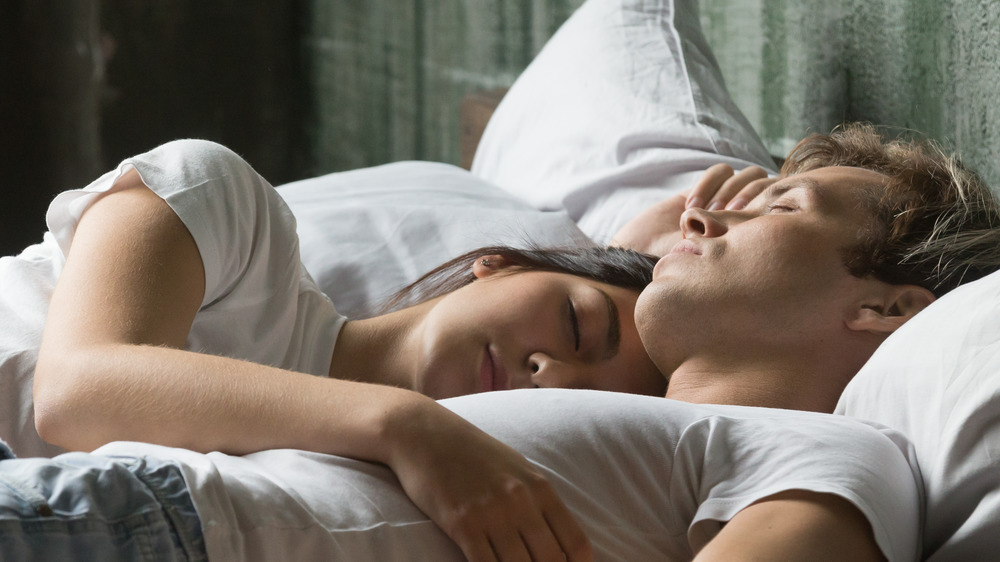
Shutterstock
Sexsomnia (aka sleep sex) involves, to put it plainly, initiating or engaging in sexual activity with a partner while asleep. About 8 percent of patients at a sleep disorders center reported this parasomnia, as documented in a 2010 American Academy of Sleep Medicine study. It was also found to be almost three times as prevalent in men. Despite how relatively common it is, patients rarely discuss it with healthcare providers.
Medical News Today describes sexsomnia as being caused by a “disruption while the brain is moving between deep sleep cycles,” often called confusion arousals. It also links obstructive sleep apnea to many documented cases. Other medical conditions are considered risk factors for sexsomnia, like restless leg syndrome, gastroesophageal reflux disease (GERD), irritable bowel syndrome, Crohn’s disease, colitis, and some medications for anxiety and depression, specifically escitalopram.
Dr. W. Christopher Winter, medical director of the sleep center at Martha Jefferson Hospital in Virginia, told Men’s Health, “Many people have a vague recollection of it happening during the night or they wake up during sex. It’s possible you may have been dreaming about sex or perhaps you went to bed with the urge.”
You might hear an explosion while sleeping
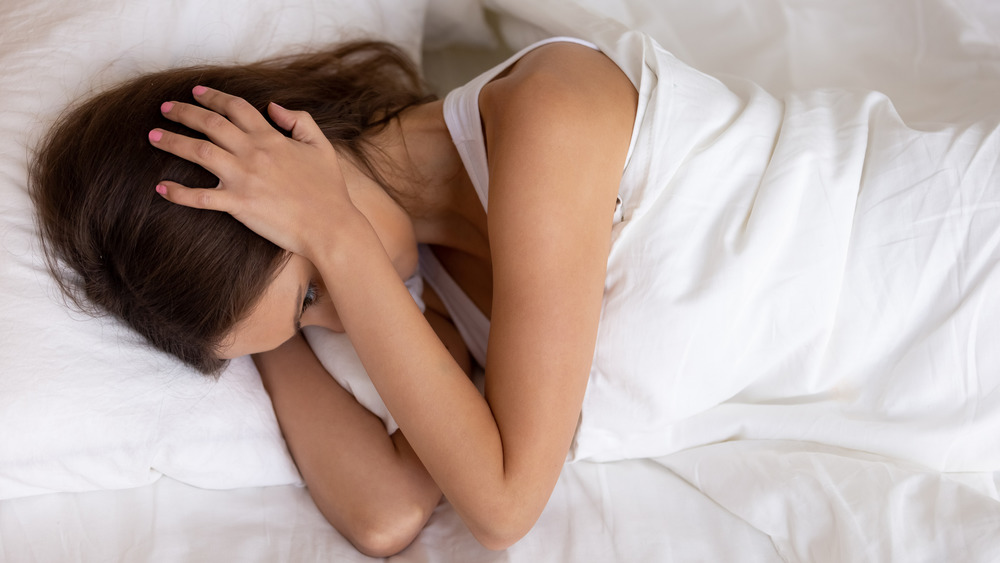
Shutterstock
Exploding Head Syndrome (EHS) is “a disorder characterized by the perception of loud noises when going to sleep or awakening,” according to the American Sleep Association (ASA). Think: bomb explosion, crashing symbols, or a gunshot. The Atlantic reported that “some people also see flashes of light, feel hot, experience chest pains and palpitations, or feel an electrical sensation rising from the lower torso to the head.”
EHS isn’t painful but, not surprisingly, it can be quite scary and confusing. It’s also thought to affect 10 percent of the population. Women tend to be more at risk, and the average age of onset is 50. Patients sometimes use medication like anti-seizure drugs or calcium channel blockers to help alleviate symptoms.
There are many theories surrounding EHS, but not much is really known about it. The ASA said that it’s thought to be highly connected with stress and extreme fatigue. It speculates on possible sources, including “minor seizures affecting the temporal lobe or sudden shifts in middle ear components.” It may also have something to do with “the brainstem reticular formation, an area of the brain that regulates sensory-motor reflexes, eye movements, motor control, and transitions between sleep and wakefulness” (via The Atlantic).
You might experience sleep terrors after falling asleep
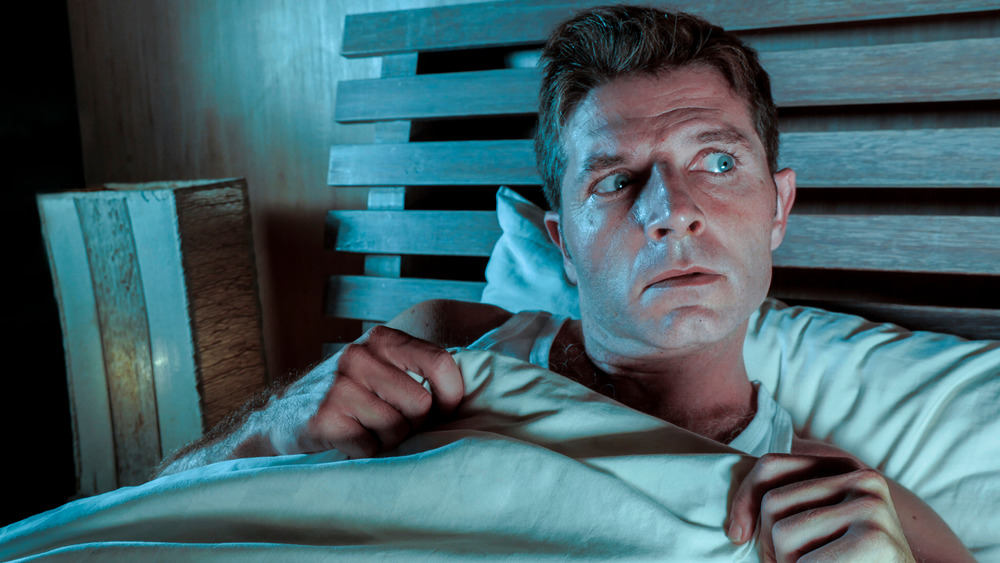
Shutterstock
Night terrors, or sleep terrors, often start with sitting up in bed and crying out, according to Healthline. It may look like you’re awake and you “might call out, cry, move around, or show other signs of fear or agitation,” the site continued. This can last for up to several minutes, and all while you’re asleep. They usually happen during the first half of your sleeping period.
Night terrors aren’t nightmares. As Healthline explained, when you wake up from a nightmare, you’ll probably remember some of it. In contrast, during a night terror, you’ll “remain asleep and usually don’t remember what happened when you do wake up.” Many adults with night terrors have mood-related mental health conditions like depression, anxiety, or bipolar disorder. Experiencing trauma or heavy stress can also be factors. In these cases, therapy can be helpful.
If your night terrors follow a consistent schedule, Healthline recommends waking yourself up 15 minutes beforehand and staying awake for several minutes before going back to sleep. Partners shouldn’t try to wake someone having an episode, but talking quietly and gently guiding them back to bed is okay. Back off if there’s any possibility of hesitation or aggression, Healthline cautioned.
You might grind your teeth while you’re asleep
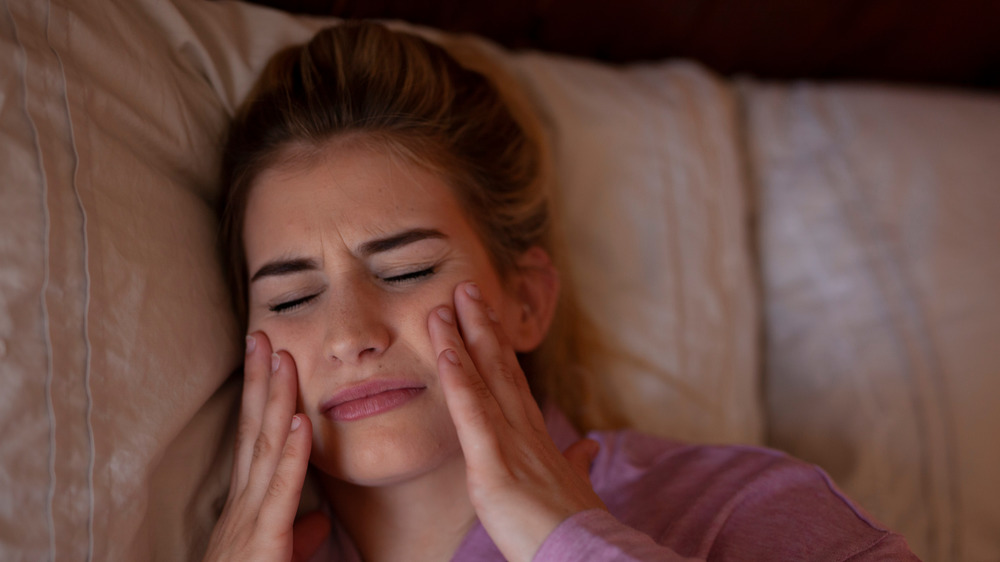
Shutterstock
Clenching or grinding of the teeth is known as bruxism. When it occurs at night, it’s called sleep bruxism, and it’s actually very different. The American Academy of Oral Medicine (AAOM) revealed that it’s “not under a person’s conscious control and usually occurs throughout the night during periods of arousal as a person goes from a deeper stage of sleep to a lighter [one]. This pattern may be repeated many times.” The jaw muscles can end up being overused, which can be painful.
Cedars-Sinai explained that more than one in 10 adults experience sleep bruxism. Dr. David Scott, a clinical psychologist, told Cedars-Sinai that often “Type A” people are often affected. A dentist can diagnose the condition, but sometimes an overnight sleep study with a physician is required. It can also be associated with a sleep disorder like obstructive sleep apnea. Treatment usually includes a bite guard or splint to wear at night. The best one, according to AAOM, is made of hard plastic and covers all the teeth in the arch. Short-term usage of medications like a muscle relaxant may help.
You might send text messages while half asleep
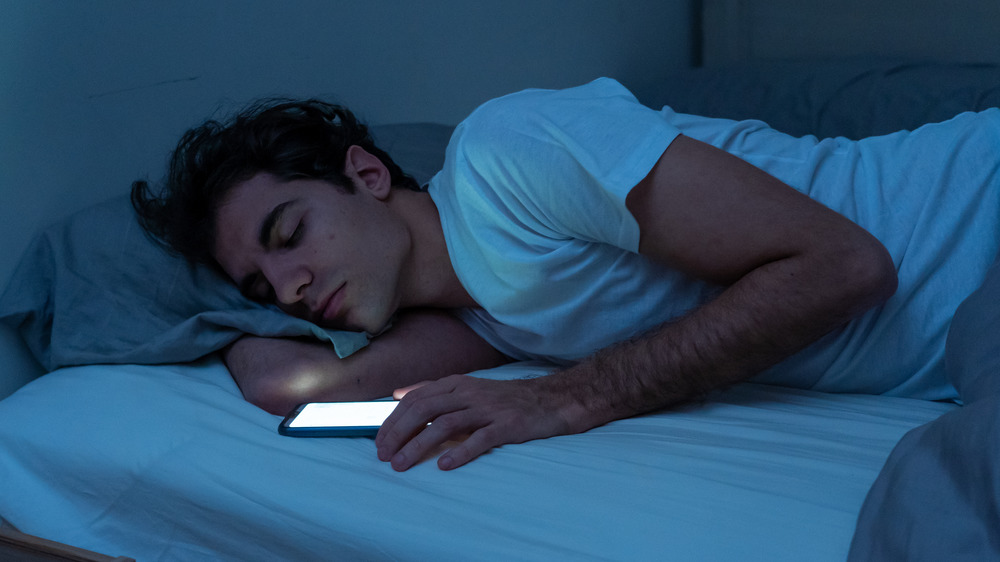
Shutterstock
Are we texting so much while we’re awake that it’s become ingrained in us to do it while we’re asleep, too? Sleep texting is, believe it or not, a real thing. In 2024, Dr. Elizabeth Dowdell published a study on the phenomenon in the Journal of American College Health. A survey of about 372 college students revealed that 93 percent keep their cell phones in their bedrooms at night, the nursing professor told Villanova Magazine.
Students who sleep text were more likely to report interruption in sleep and keep their phones in the bed with them. More than 25 percent of college students who participated in the study reported having texted while sleeping. Of these, 72 percent reported that they don’t remember sleep texting, and 25 percent didn’t even remember what they had texted. The study’s shocking conclusion? “Sleep texting and its influence on poor sleep habits is a growing trend in a college student population.”
Lest you think you’re immune because you’re older, adults do it too. Although, as CNN revealed, the term “sleep texting” is a bit of misnomer. “It’s more like ‘half-asleep’ texting, as doctors describe it as a state of rest where a person isn’t fully awake,” the publication explained.
You might physically act out your dreams while sleeping
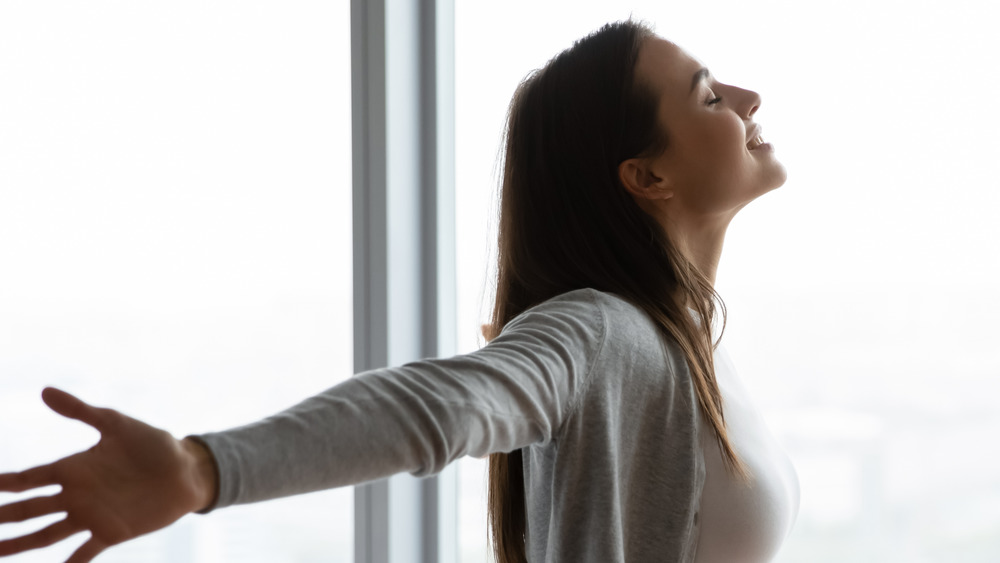
Shutterstock
Acting out your dreams while asleep is known as REM sleep behavior disorder (RBD). Normally, our bodies are paralyzed during REM sleep aside from our eye muscles, the Cleveland Clinic explained. But in RBD, “a switch in the brainstem is no longer immobilizing you, [so] your muscles are free to carry out the actions in your dreams,” sleep medicine specialist Dr. Carlos Rodriguez told the clinic. This can range from screaming, diving out of bed and into furniture or running straight into a wall, he said.
The difference between RBD and sleepwalking or night terrors is that the eyes are usually closed, patients aren’t at all aware of their environment, and “they can’t make it too far from the bed,” according to the doctor.
RBD is most commonly observed in men over the age of 50, and it tends to occur during the last half of the night. The only way to diagnose the condition is with a sleep study. Thankfully, medications can help with symptoms. Other neurodegenerative disorders, like Lewy body dementia, have been linked to RBD. Additionally, more than 80 percent of people with RBD eventually have Parkinson’s symptoms, according to Verywell Health.
You might eat a meal while totally asleep
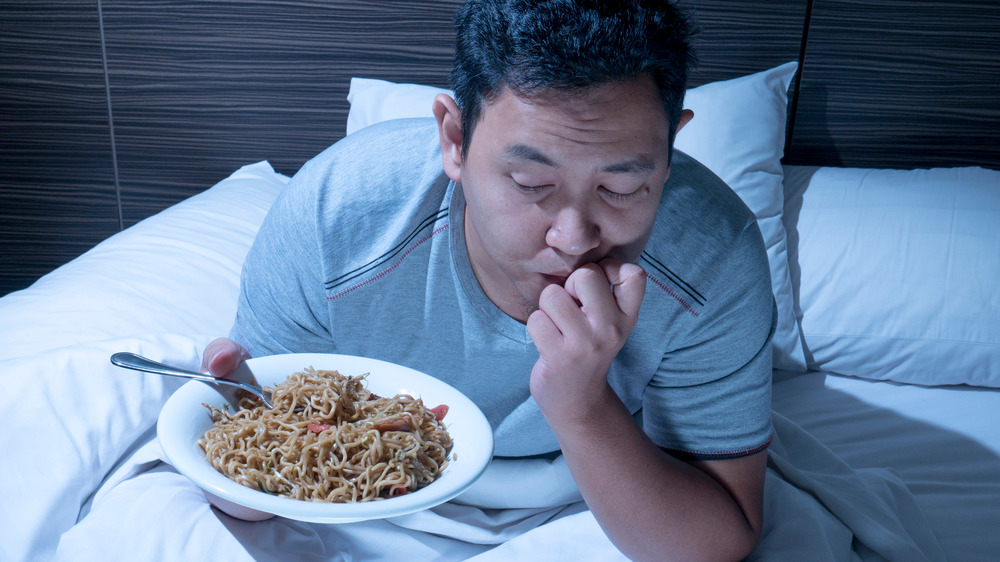
Shutterstock
If you have unexplained weight gain, perhaps you could have the rare parasomnia of eating while asleep. The American Academy of Sleep Medicine that you may not remember an episode of sleep eating unless you see evidence, like an upturned kitchen or candy wrappers.
There are two conditions used to classify sleep eating: night eating syndrome and sleep-related eating disorder (SRED). Dr. Brandon Peters wrote about this for HuffPost on behalf of the Stanford Center for Sleep Sciences and Medicine: “The former consists of a fully awake person who engages in compulsive eating at night, typically due to abnormalities of the hypothalamic-pituitary axis. The latter is far more common.”
SRED involves recurrent episodes of involuntary eating and drinking, and the episodes last under 10 minutes. The unfortunately unappetizing thing is it may mean eating weird forms or combinations of food, or even inedible or toxic substances like pet food, coffee grounds, and cleaning solutions. When sleep studies are conducted, another sleep disorder is identified in 80 percent of cases, Dr. Peters said. Effective treatments exist; the first step is to see a sleep specialist.
You might experience lucid dreams
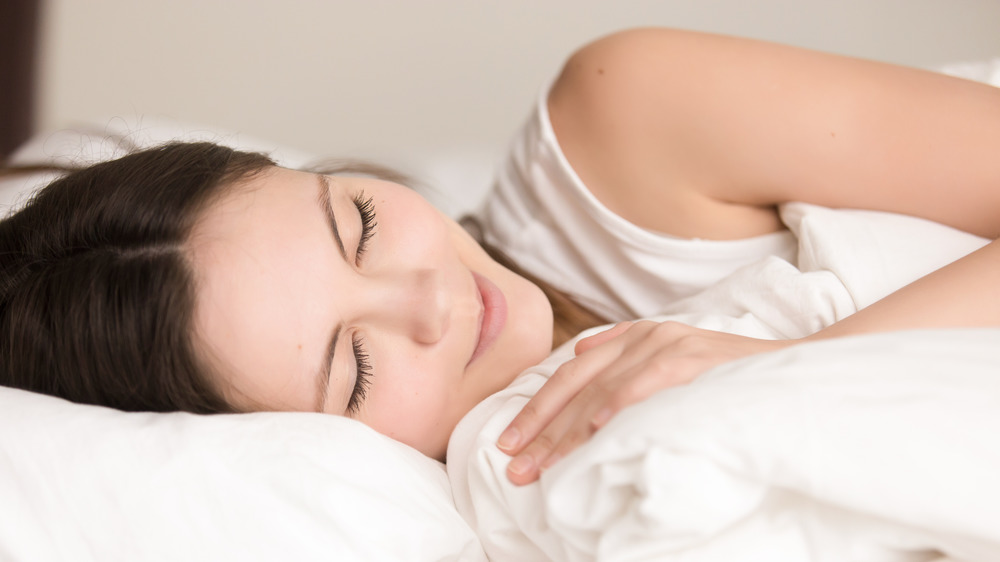
Shutterstock
As a 2024 study in Perceptual and Motor Skills explained, “Lucid dreams occur when a person is aware that he is dreaming while he is dreaming.” In the sample, 51 percent of participants reported experiencing a lucid dream at least once.
Two main factors of lucid dreaming are the self-awareness of dreaming and the ability to control dreams, clinical psychologist Michael J. Breus explained in an article for The Sleep Doctor — but they don’t always occur together. Certain personality traits and cognitive styles may be linked to lucid dreams, the article continued, like imagination, creativity, and introspection. The ability to split attention between different tasks is another commonality.
Lucid dreaming has been linked to both sleep paralysis and narcolepsy. People who experience nightmares more often may also be prone to lucid dreams, and stronger overall dream recall may be linked to a greater capacity for lucid dreaming. And, interestingly, it’s even possible to teach yourself how to be a lucid dreamer.
You might moan and groan in your sleep without realizing
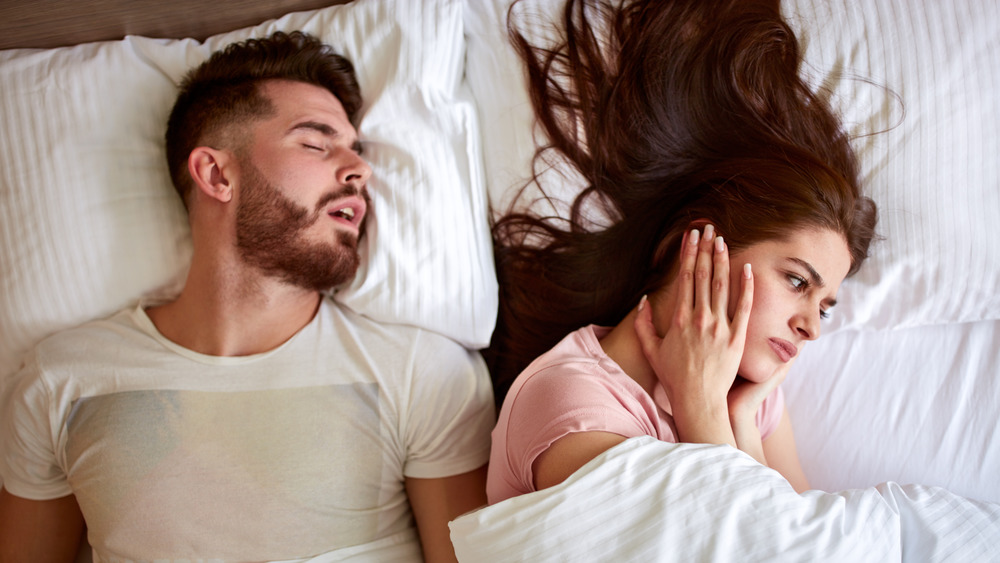
Shutterstock
Sleep groaning, or catathrenia, occurs when someone moans or groans in their sleep. According to the American Sleep Association, it’s rare, long lasting, and occurs nightly. It’s also loud. While it can happen during any stage of sleep, it’s seen the most during REM sleep or deep sleep. Restless sleep with lots of tossing and turning may actually keep it at bay. This noise isn’t quite like snoring, because it happens during exhalation and one groan can last as long as 30 seconds. They’re usually followed by a snort or sigh at the end.
The American Sleep Association revealed that it seems to affect more men than women, and can start at any age. Subjects may actually wake up with sore throats from all that moaning and groaning. One study noted that 43 percent of participants had a past history of a parasomnia in childhood, 86 percent had orthodontic procedures, and 71 percent had tooth extractions in adolescence (via American Sleep Association).
A continuous positive airway pressure (CPAP) device can be used to treat this condition. The good news is this is a pretty harmless parasomnia; the person even wakes up feeling rested — though his bedmate may not feel the same.
You might experience false awakenings while asleep
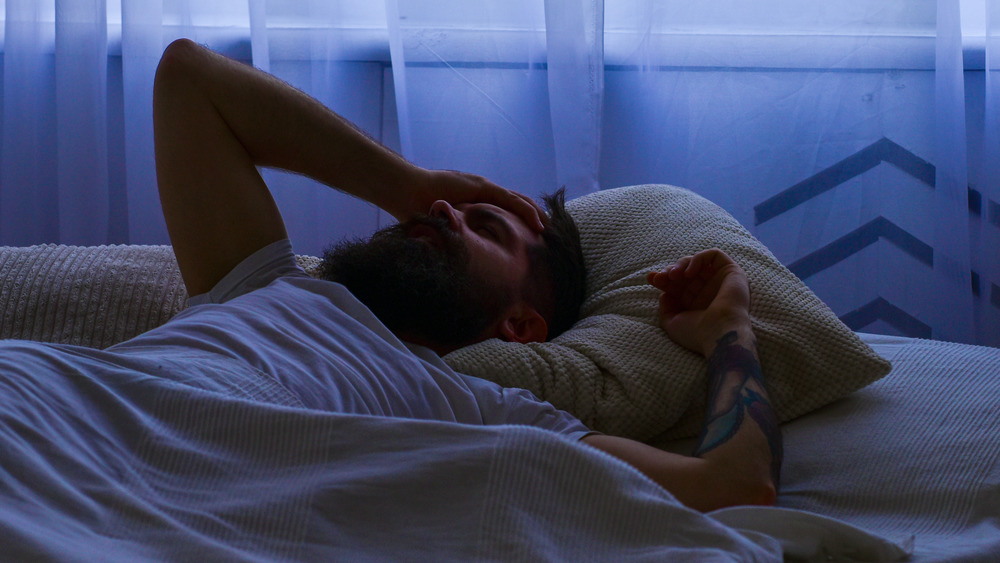
Shutterstock
Have you ever felt like you woke up while you remained asleep? That’s known as a false awakening. It can feel real and have vivid, realistic images, according to Healthline. There are two main types, as researcher Celia Green told the site. A Type 1 false awakening is straightforward, with possible feelings of disorientation or distress upon actually awakening. With Type 2, “you might wake up with a sense of foreboding or feel convinced that something strange or bad is about to happen,” Healthline explained.
Not surprisingly, many people who experience false awakenings also have lucid dreams. In fact, lucid dreams often end in false awakenings, and a false awakening can become a lucid dream. Is this confusing enough? Kari Hohne, dream analyst, told Refinery29 that the occasional false awakening is likely due to a change in schedule or an increased sense of urgency about an upcoming task. Recurring false awakenings seem to relate to a situation that someone doesn’t want to deal with. In false awakenings — unlike lucid dreaming — there’s usually something that signals to you that you’re not actually awake.

